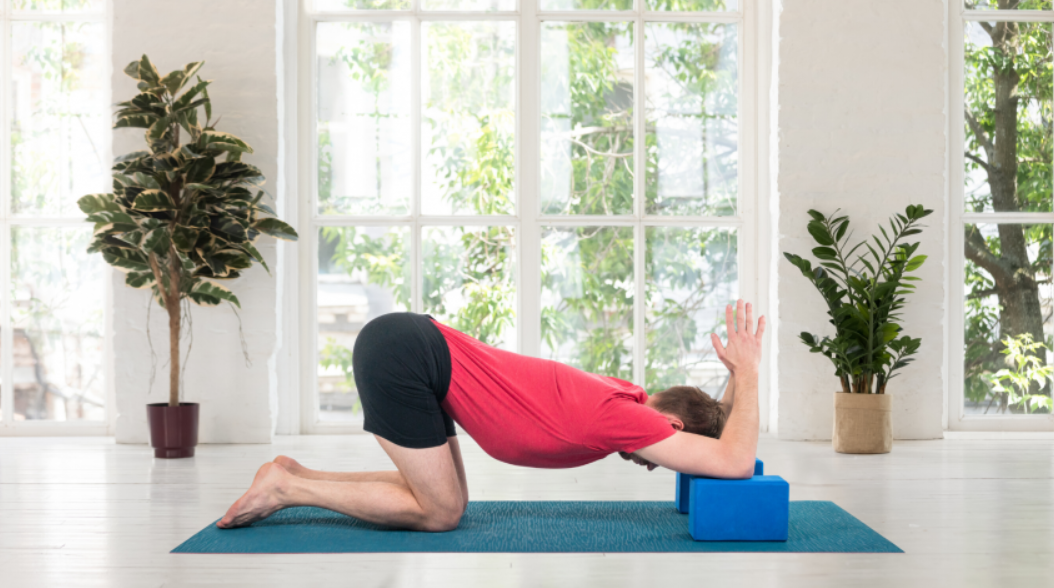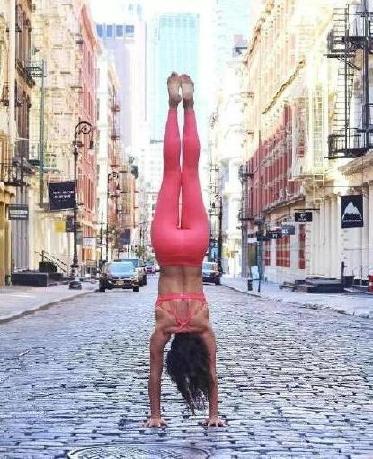When I first started practicing yoga, I was still in the “no pains, no gains” mentality of teaching high-intensity aerobic exercise for many years.

This attitude, coupled with my frustration of trying to enter the Sirsasana one day, led to my falling on the mat and intermittent neck pain, which has been around for almost eight years.
Although bad Yoga attitude and lack of skills and preparation lead to injuries, I have improved my attitude and skills and learned how yoga can also heal old injuries.
Prevalence of neck pain according to research reports, nonspecific neck pain affects about two-thirds of people, usually in middle age.
Although acute neck pain usually subsides within a few weeks, about 10% of patients develop chronic neck pain.
Neck and shoulder pain often overlap due to the involvement of pain through numerous nerve pathways connecting the neck and shoulder.
The connective soft tissue between the neck and shoulder is also prone to confuse specific primary injuries or pain sources.
The most common causes of shoulder and neck pain are soft tissue injuries, including muscles, tendons, and ligaments within these structures.
Spending hours in front of a poorly aligned computer or smartphone is another factor contributing to increased neck and shoulder pain.
When the spine collapses forward, the shoulder blades slide away, overstretching and weakening the surrounding muscles.
Weak muscles are more likely to develop painful tightness along the shoulder blades and neck.
Common treatments for neck and shoulder pain include rest, ice compress, and over-the-counter nonsteroidal anti-inflammatory drugs such as ibuprofen.
However, severe or worsening pain or numbness and weakness in the extremities require a doctor’s assessment.
A study on the effectiveness of Iyengar yoga in the treatment of spinal pain (including neck pain) found that the intensity of pain in the yoga group decreased significantly and was clinically significant.
The researchers concluded that yoga is often recommended as an additional evidence-based therapeutic intervention for back and neck pain.
In addition to its benefits as a form of exercise, yoga seems to improve body awareness, pain acceptance and coping.
How to practice yoga with the neck and shoulder in mind like all yoga exercises, the correct form and alignment is the key to alleviate and prevent neck and shoulder pain.
Common malpositions include covering the neck in a back bend.
I didn’t ask my students to look up, which would lead to over extension of the cervical spine.
I encourage them to look no higher than the intersection of the wall and the ceiling.
In Salabhasana (locust), bhujangasana (COBRA) or urdvamukhasvanasana (dog up), students should keep their neck neutral or look at the floor in front of the mat, not as shown in the right figure.
Fold back forward into a circle.
Try using the tip “push your heart forward to lengthen your spine.”.
Shrug in virabhadrasanai (Warrior ipose).
Remind students to keep their shoulders away from their ears and rotate their arms slightly outward to open their chest and shoulders.
Round shoulders, hands clasped behind your back.
In the chest enlargement position, encourage students to bend their elbows slightly rather than push their knuckles back.
Pushing the clenched hands backward tends to pull the shoulders inward, while the bent elbows will produce external rotation.
Alternatively, they can hold the yoga belt with their hands shoulder width apart.
Inverted poses such as Sirsasana (head inverted pose) and Sarvangasana (shoulder inverted pose) should be attempted only when the student has practiced the appropriate preparation posture and has enough strength to maintain the posture.
Neck support in shoulder handstands can be achieved by placing an extra folded blanket under the shoulder and the head on the floor.
Six yoga postures, take care of your neck and shoulders when my students tell me that their neck and shoulders are tight, I incorporate the restorative versions of these six postures into my class to relieve their neck and shoulder pain: 1 Garudasanaarms with tilted chin: from any comfortable sitting position, bring your arms together into eaglearms to stretch the rhomboid and lower trapezius muscles.
In this pose, tilt the chin slightly toward the chest to allow the extension to reach the scalene muscles that extend along the sides of the neck.
2 Wreath type of neck tension: start from wreath type, put your chin in front of your chest and make your back round.
Gently cross your hands at the bottom of your neck.
Never pull your head down, but hold it tight and encourage your neck to relax.
3 Parsvabalasana: needle piercing is very suitable for opening the upper and external muscles of the shoulder and delivering fresh oxygenated blood to the upper limbs.
As with all twist poses, move gently and carefully throughout the stretch.
Place a rolled up towel, small pillow or neck pillow under the neck for additional support, which will help to relax the neck muscles.
4 Open shoulder baby pose: place two shoulder width pads in front of the pad.
Starting from the kneeling position, place your elbows on a wooden block.
Bring your hands into anjalimudra and slowly lower your head between the blocks.
Ideally, place your hands in the reverse prayer position on your back.
You look like you are in the modified Balasana (child pose).
If your shoulders are too tight, use an extra support block under your forehead.
5.
matsyasana Fish pose with support: starting from the sitting position with knees bent, place a building block horizontally between the shoulder blades.
Place the second block vertically under the head for support..


